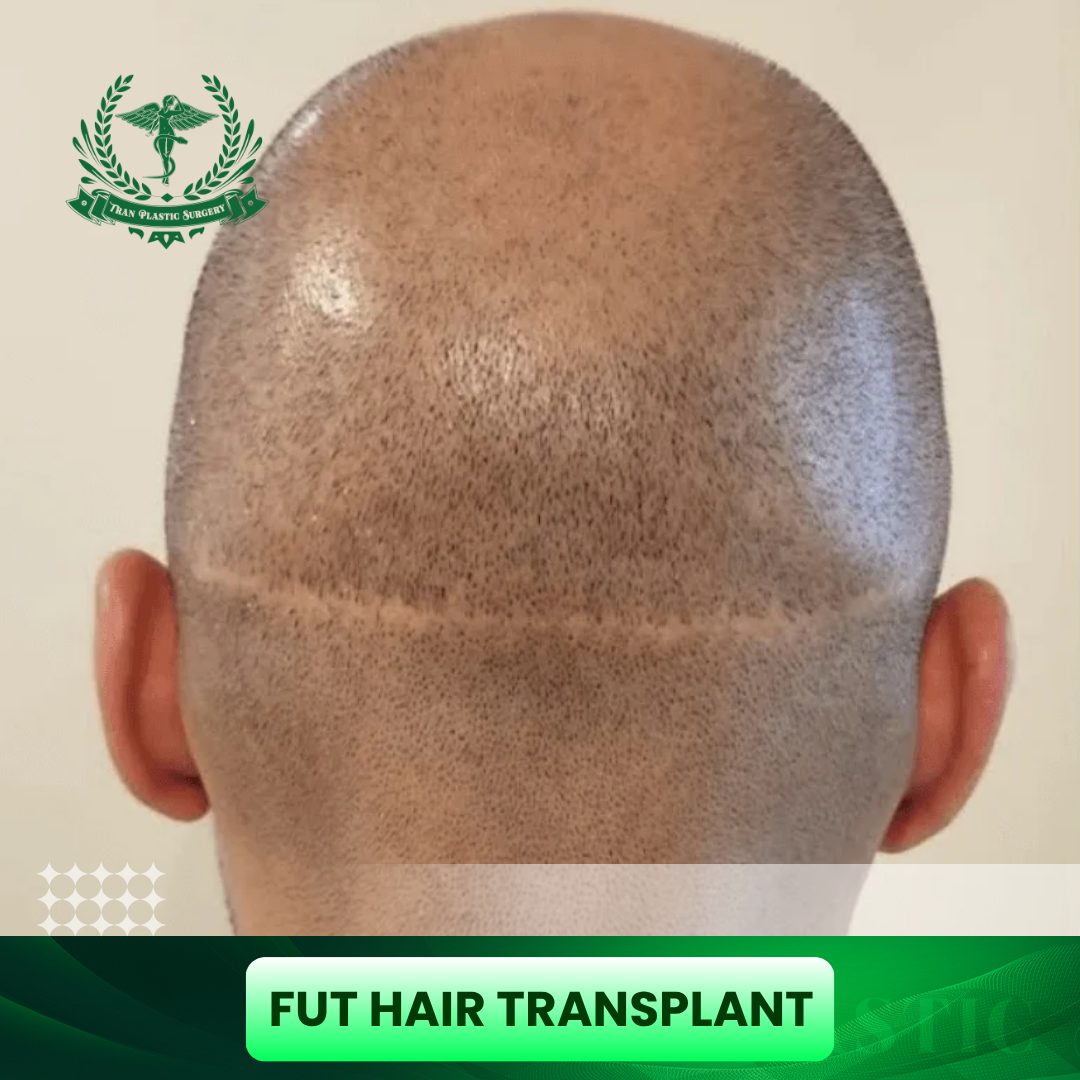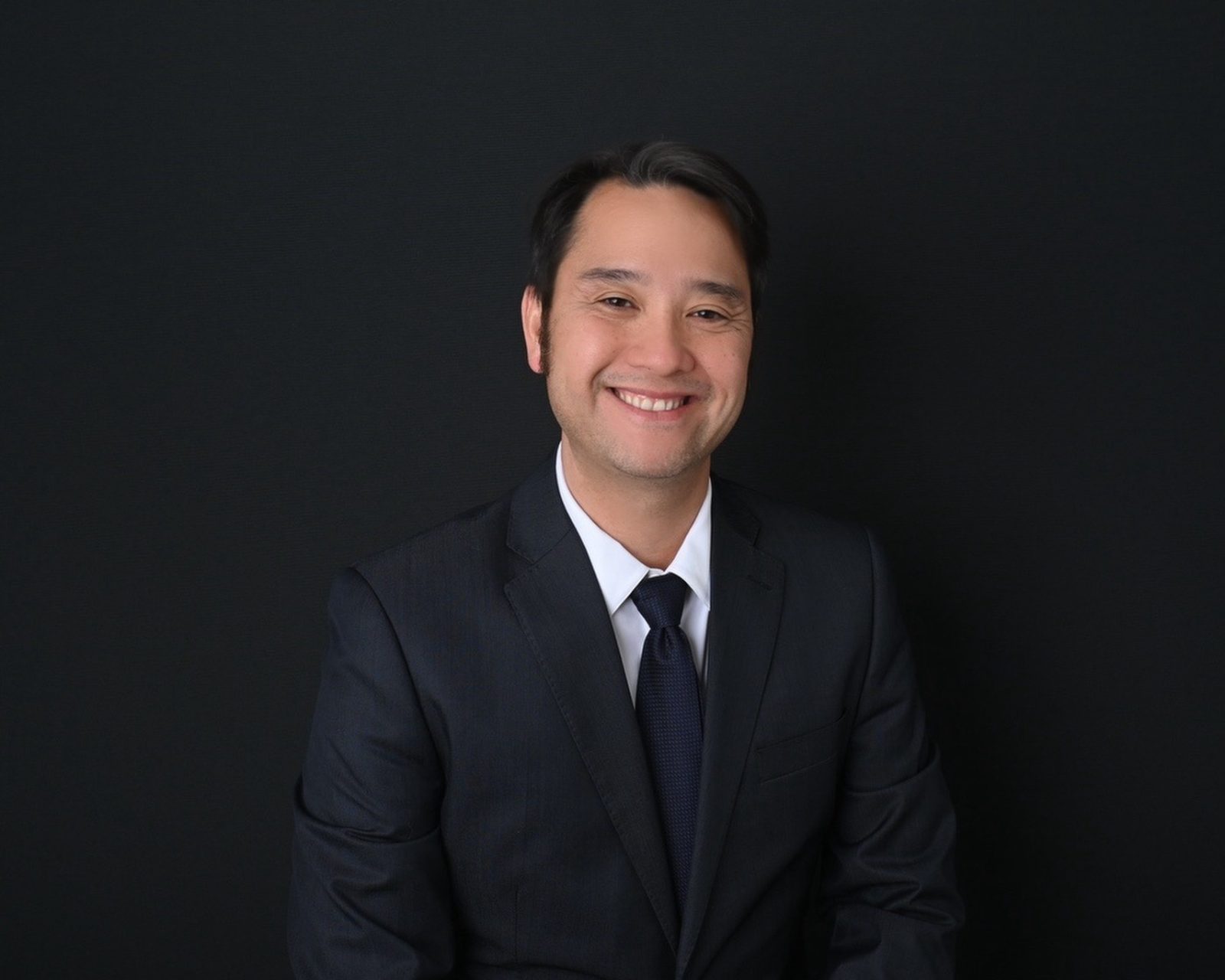A FUT hair transplant is one of the most trusted and effective solutions for restoring natural hair growth in individuals experiencing moderate to advanced hair loss. This advanced medical procedure, also known as Follicular Unit Transplantation, offers long-lasting density by transplanting healthy hair follicles from a donor area to thinning or bald regions of the scalp. In this guide Tran Plastic Surgery’s, you’ll discover how FUT works, what makes it different from FUE, the step-by-step surgical process, recovery expectations, potential side effects, treatment costs, and how to choose the right surgeon for safe, natural-looking results.
Table of Contents
ToggleWhat Is a FUT Hair Transplant?
A FUT hair transplant, short for Follicular Unit Transplantation, is a surgical hair restoration technique that moves natural hair follicles from the back or sides of the scalp areas genetically resistant to hair loss to regions affected by thinning or baldness. This method is often called the strip harvesting technique because the surgeon removes a thin strip of scalp from the donor zone to extract healthy follicular units under a microscope.
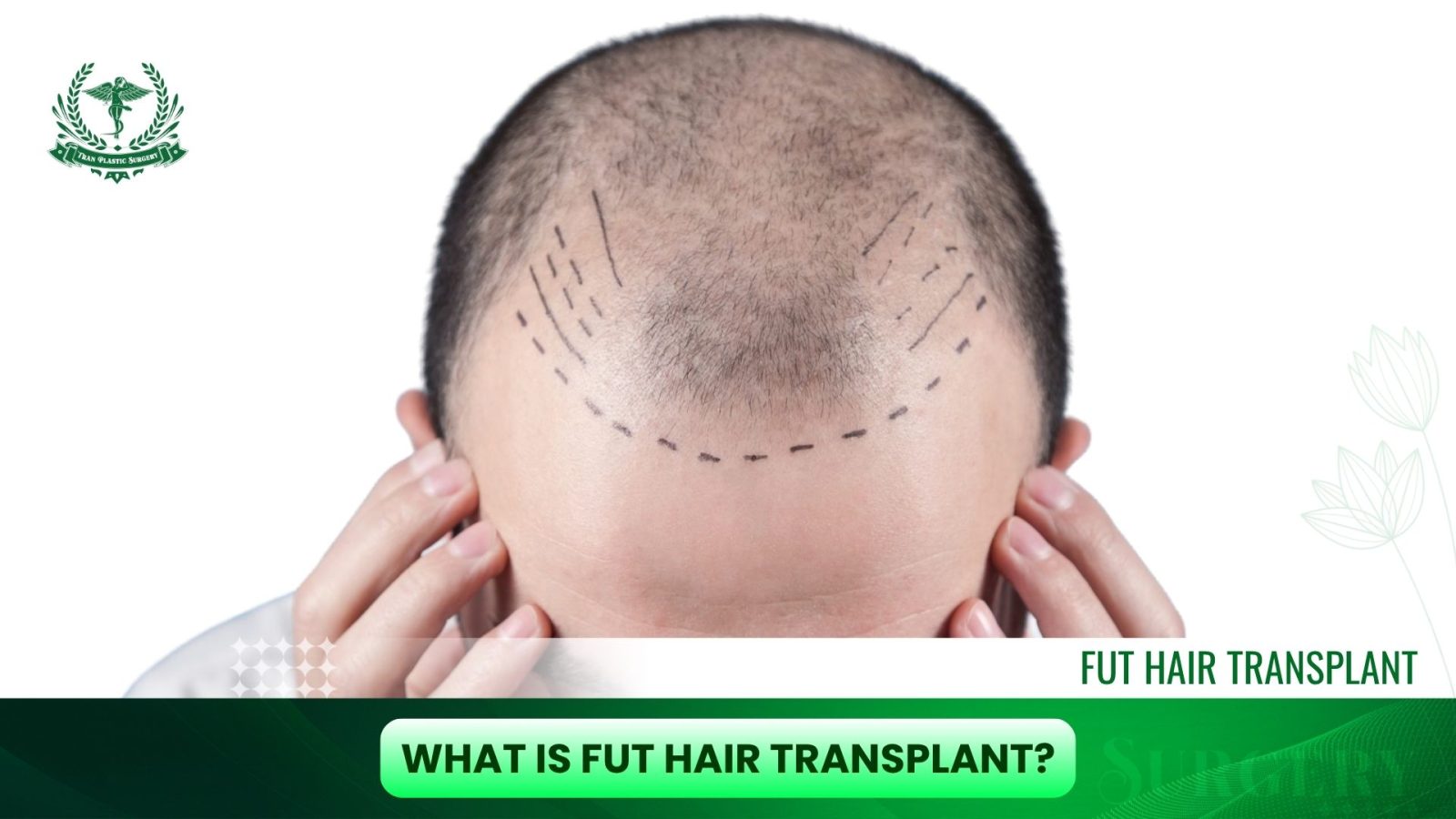
Unlike newer extraction-based procedures such as FUE (Follicular Unit Extraction), FUT allows a larger number of grafts to be transplanted in one session, making it highly suitable for patients who desire significant coverage or higher density. The harvested grafts are carefully implanted into the recipient area, following the natural angle and direction of existing hair, ensuring a seamless and realistic result.
The FUT hair transplant surgery has been refined over the years, resulting in more precise techniques, smaller scars, and improved healing times. When performed by an experienced surgeon, FUT can deliver exceptionally natural results with high graft survival rates. Many patients choose this method over FUE when their primary goal is to achieve the maximum amount of transplanted hair in a single procedure.
FUT vs. FUE Hair Transplant
Both FUT and FUE hair transplant procedures are designed to achieve the same goal of permanent, natural hair restoration but they differ in how donor follicles are obtained.
In a FUT hair transplant, a small strip of skin is removed from the donor area, allowing surgeons to harvest thousands of grafts in a single session. The wound is then closed with advanced suturing techniques, typically leaving a thin, linear scar that can be easily concealed by surrounding hair.
By contrast, the FUE (Follicular Unit Extraction) technique involves removing individual follicular units one by one using tiny punches, leaving minimal dot-like scars. While FUE offers faster healing and flexibility for shorter hairstyles, FUT remains the preferred method for patients requiring a higher number of grafts, stronger follicle survival rates, or who want to maximize donor hair preservation for future procedures.
Choosing between FUT and FUE ultimately depends on your hair characteristics, scalp flexibility, and long-term restoration goals, factors that should always be discussed with a qualified hair transplant surgeon.
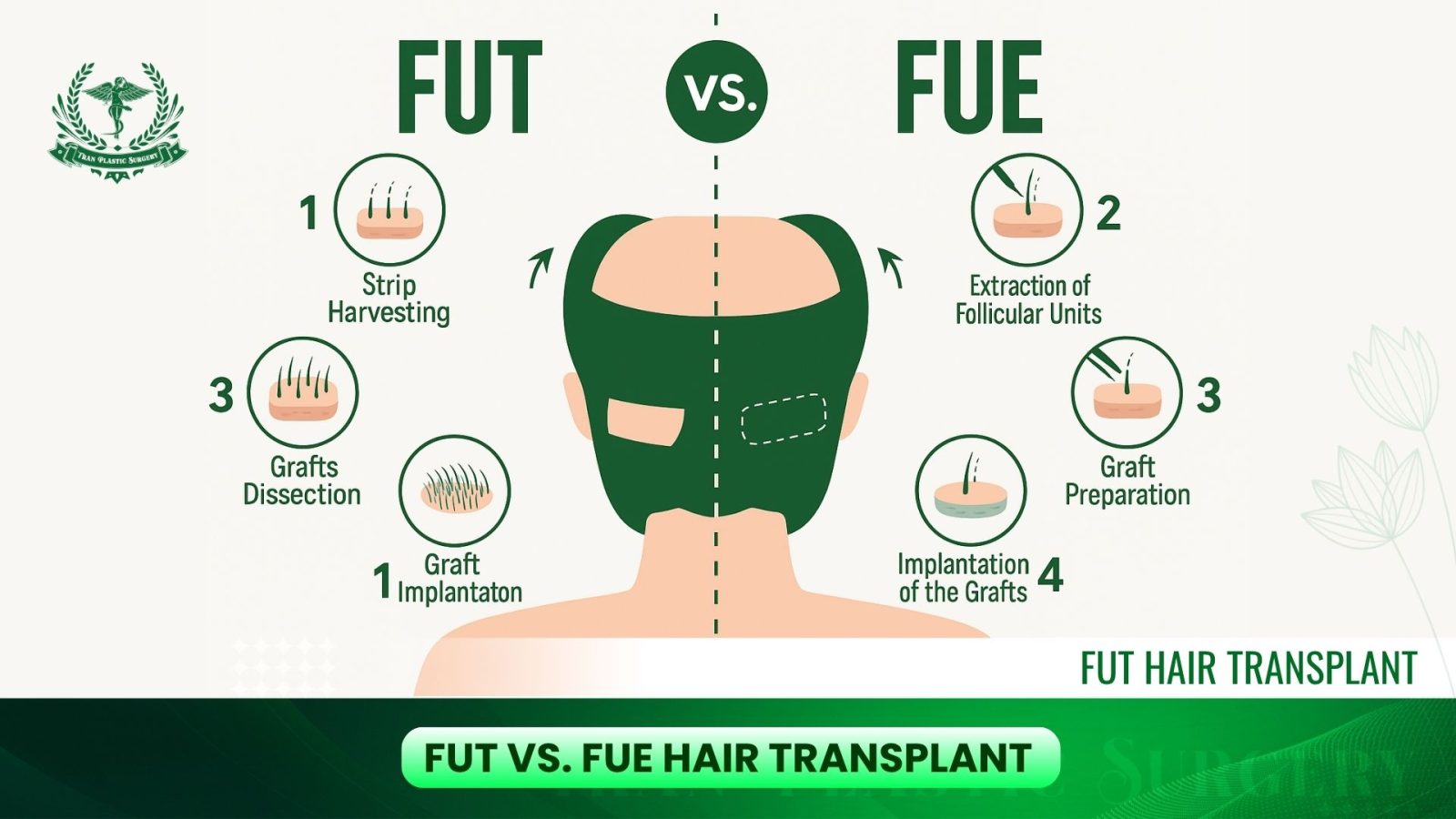
Considering a FUT Hair Transplant? Schedule a personal consultation with Dr. Tuan Tran at Tran Plastic Surgery, a board-certified plastic surgeon renowned for precision and artistry in hair restoration. Dr. Tran combines advanced FUT and FUE techniques to deliver natural, lasting results tailored to each patient’s unique needs.
>>>Book your consultation with Dr. Tran today<<<
FUT Hair Transplant Cost in 2025
The FUT hair transplant cost in 2025 depends on your location, the number of grafts needed, and your surgeon’s experience. On average, FUT remains one of the most affordable and high-density hair restoration techniques worldwide.
Average FUT Hair Transplant Cost by Country (2025)
| Country / Region | Average Cost (USD) | Estimated Cost per Graft | Notes |
| United States | $4,000 – $10,000 | $2 – $5 | Board-certified clinics, higher labor cost |
| United Kingdom | £3,000 – £7,000 | £1.50 – £3.50 | Similar to U.S. quality standards |
| Canada | $4,000 – $8,500 | $2 – $4 | Strong focus on medical regulations |
| Turkey | $1,500 – $3,500 | $0.60 – $1.20 | Popular for medical tourism, lower operating costs |
| India | $1,200 – $2,500 | $0.50 – $1 | Affordable, high volume of international patients |
| UAE / Dubai | $3,000 – $6,000 | $1.50 – $3 | Premium clinics with luxury packages |
(Data is for reference only, based on 2025 market average for follicular unit transplantation procedures compiled from multiple sources)
FUT vs. FUE: Which Is More Cost-Effective in 2025? While both procedures restore hair permanently, the FUT hair transplant is generally 20–30% more affordable than FUE. FUT allows surgeons to harvest thousands of grafts in a single session using one donor strip, reducing surgical time and material costs. For patients needing large coverage or high density, FUT provides maximum value per graft without compromising on results.
When researching the best FUT hair transplant cost near you, focus on clinics that are accredited by reputable organizations such as ISHRS or ABHRS, offer transparent per-graft pricing, and showcase real before-and-after results. Reliable surgeons provide personalized estimates based on graft count, scalp condition, and desired density, ensuring clear expectations. While the upfront FUT hair transplant cost may differ by location, the procedure is a smart long-term investment delivering permanent, natural hair growth without ongoing maintenance when performed by an experienced, board-certified specialist.
>>> Read the article: Hair Transplant And Medical Treatment For Hair Growth
Advantages of FUT Hair Transplant
A FUT hair transplant offers several significant advantages that make it a preferred choice for patients seeking substantial and long-lasting hair restoration results. The technique is especially valuable for individuals experiencing advanced stages of hair loss who want to achieve maximum density and natural coverage in a single session.
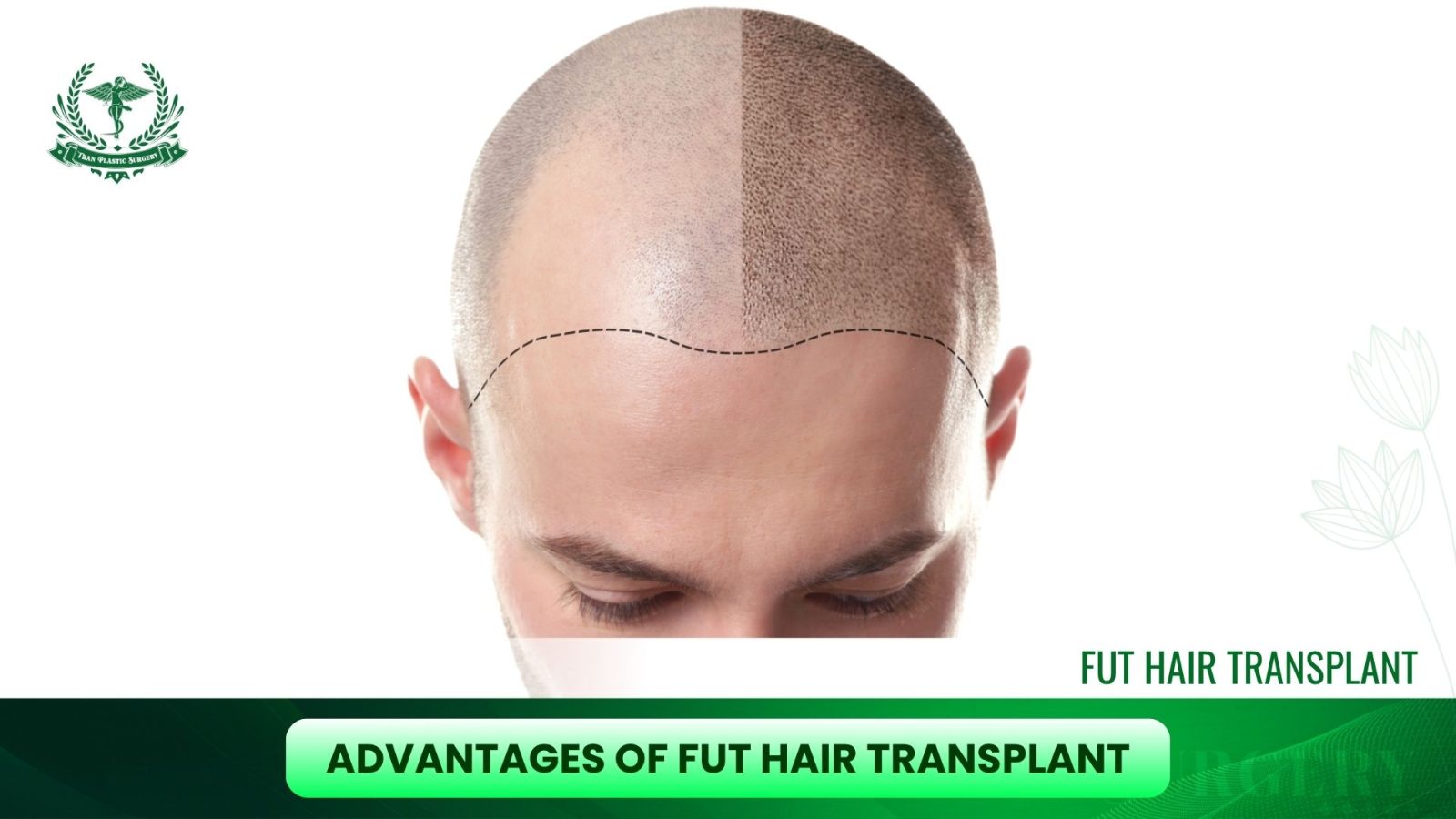
1. High Graft Yield and Density
One of the main advantages of the FUT hair transplantation method is its ability to produce a large number of viable grafts from a single donor strip. Because the follicles are dissected under a high-powered microscope, each graft remains intact and healthy. This precision ensures a higher survival rate and allows the surgeon to restore a fuller hairline and thicker coverage compared to other techniques.
2. Long-Term Donor Hair Preservation
In a FUT hair transplant surgery, the donor area is carefully chosen and sutured, leaving the surrounding hair untouched. This approach helps preserve the remaining donor hair for future procedures, an important factor for patients who may experience progressive hair loss over time. FUT allows for efficient use of the donor zone, maintaining its integrity for years to come.
3. Natural-Looking Results
When performed by an experienced surgeon, FUT hair transplant results can look entirely natural. Each follicular unit is placed strategically to mimic the natural direction and angle of hair growth. The outcome is a dense, natural appearance without the “pluggy” look once associated with older transplant methods.
4. Ideal for Extensive Hair Loss
For patients with significant bald areas or a high Norwood classification, FUT hair transplantation provides the volume needed to achieve full restoration. Since a large number of grafts can be harvested in one procedure, it often reduces the need for multiple sessions and shortens the overall treatment timeline.
5. Cost-Effectiveness
Compared to FUE, the FUT hair transplant cost is typically more affordable per graft because the harvesting process is faster and requires fewer consumable instruments. Patients seeking large-scale coverage often find FUT to be a more budget-friendly yet effective solution.
6. Minimal Damage to Follicles
The controlled surgical environment of FUT allows follicles to be handled with care and precision. Because each graft is dissected under direct vision, the risk of follicle transection (damage during extraction) is reduced, resulting in stronger and more consistent hair regrowth.
A well-performed FUT hair transplant combines efficiency, durability, and aesthetics. For patients seeking maximum hair density and permanent results, the FUT technique remains one of the most reliable procedures in modern hair restoration.
Who’s a Good Candidate for FUT Hair Transplant?
A FUT hair transplant is not a one-size-fits-all procedure. It is best suited for specific types of patients who meet certain medical and aesthetic criteria. Understanding whether you’re a good candidate helps ensure realistic expectations and optimal long-term results.
- Men with advanced hair loss: FUT is excellent for patients on the Norwood scale 3 or higher who want maximum graft coverage in a single session.
- Individuals with strong donor density: A stable donor area at the back or sides of the scalp ensures lasting, natural growth.
- Patients seeking higher graft yield: The strip method allows surgeons to harvest thousands of grafts efficiently while preserving the donor zone.
- Those who can conceal a linear scar: FUT leaves a fine scar that is easily hidden under medium or long hair.
- People seeking cost-effective treatment: The FUT hair transplant cost per graft is generally lower than FUE, offering greater value for large procedures.
- Women with specific hair loss patterns: FUT hair transplantation can benefit women with thinning along the hairline or those looking to lower a high forehead.

Before proceeding with a FUT hair transplant, patients should undergo a detailed evaluation by a board-certified hair restoration surgeon. A comprehensive consultation will assess scalp condition, donor density, medical history, and long-term goals. When these factors align, FUT can provide outstanding, permanent, and natural-looking results that restore both hair and confidence.
FUT Hair Transplant Procedure: Step-by-Step
A FUT hair transplant is a precise and carefully planned surgical procedure designed to create long-lasting, natural-looking results. Every stage of the operation requires both surgical skill and aesthetic judgment to ensure the transplanted hair blends seamlessly with the existing growth. Below is a detailed look at each phase of the process.
Step #1: Anesthesia and Preparation
Before the procedure begins, the patient’s scalp is thoroughly cleansed and marked to define the donor and recipient areas. Local anesthesia is then administered to numb the scalp, ensuring comfort throughout the FUT hair transplant surgery. Some clinics also offer mild sedation to help patients remain relaxed. The surgeon reviews the design of the hairline and graft distribution plan one final time before proceeding.
Step #2: Harvesting the Donor Strip
The defining step of a FUT hair transplant involves carefully removing a thin strip of skin from the donor area, usually the back of the head where hair growth remains permanent and unaffected by DHT (the hormone responsible for pattern baldness). The length and width of this strip depend on the number of grafts required for optimal coverage.
After extraction, the donor area is closed using fine sutures or staples, often with a trichophytic closure technique that allows surrounding hair to grow through the scar. When performed correctly, this method leaves only a faint, linear mark that is easily concealed by surrounding hair.
Step #3: Graft Dissection Under the Microscope
Once the donor strip is removed, the tissue is handed to a team of skilled technicians who use stereoscopic microscopes to dissect it into individual follicular units. Each unit typically contains one to four hairs. This meticulous process preserves the integrity of each graft and maximizes survival rates. Proper dissection also minimizes trauma to the follicles, which is key to achieving thick and natural regrowth after a FUT hair transplantation procedure.
Step #4: Recipient Site Creation
The surgeon then designs and creates small incisions known as recipient sites in the thinning or bald areas of the scalp. The angle, direction, and depth of each incision are customized to replicate the patient’s natural hair pattern. The artistry at this stage determines how seamless and realistic the final result appears. For example, single-hair grafts are used along the hairline for a soft and natural look, while larger grafts are placed strategically to add density behind it.
Step #5: Graft Placement
Once the recipient sites are ready, each follicular unit graft is carefully inserted into the designated incisions using fine surgical instruments. Precision and gentle handling are essential to prevent follicle damage and ensure secure placement. The process may take several hours, depending on the total number of grafts. Throughout the procedure, the medical team keeps the grafts hydrated and temperature-controlled to promote optimal survival.
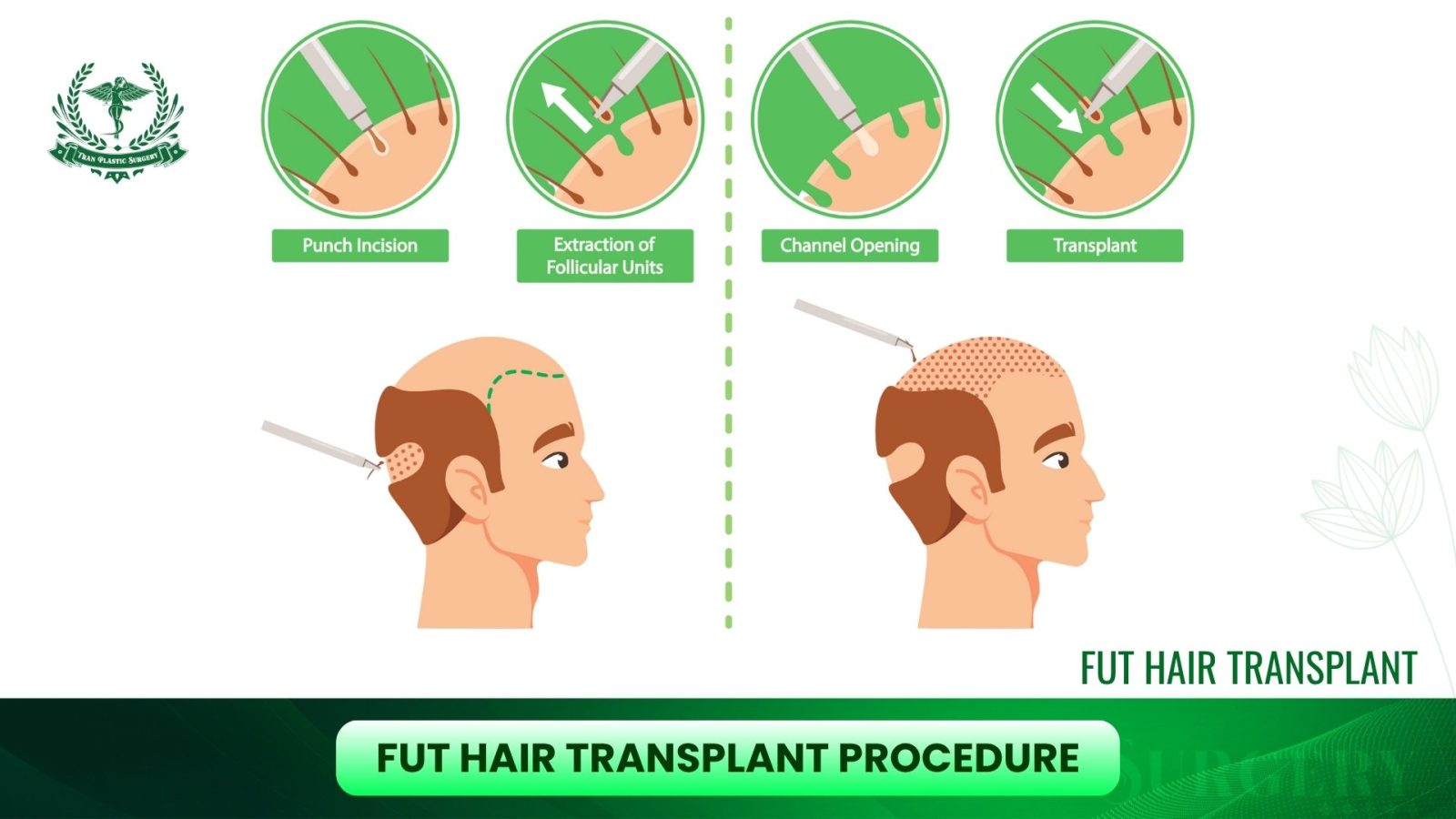
At the end of the FUT hair transplant procedure, the scalp is cleaned, and postoperative care instructions are provided. Most patients can return home the same day, with only mild soreness or tightness in the donor area. The careful balance of surgical technique and artistic design during this stage sets the foundation for strong, natural hair growth in the months ahead.
>>> Related post: Tissue Expansion Hair Transplantation: Procedure, Cost & Recovery
FUT Recovery & Results Timeline
Recovery after a FUT hair transplant is generally smooth and predictable when proper care is followed. Mild soreness, swelling, and tightness in the donor area are common during the first few days. Patients are usually able to resume light activities within two to three days, following their surgeon’s postoperative instructions.
By the second week, stitches are removed, and any scabs or redness begin to fade. Some shedding of transplanted hairs may occur around this time a normal phase known as shock loss, signaling that the follicles are entering a temporary rest period before regrowth begins.
New hair typically starts to appear between the third and fourth month after the FUT hair transplantation. The growth continues to improve in texture and density over the next several months. By six to nine months, patients see a visible transformation, with stronger, thicker hair blending naturally with existing strands.
Final FUT hair transplant results usually emerge within 12 to 15 months, offering permanent, natural-looking coverage. The transplanted follicles behave like normal hair, allowing for regular styling and maintenance. With proper aftercare and an experienced surgeon, the recovery process is comfortable, and the long-term outcome is both durable and life-changing.
FUT Hair Transplant Side Effects & Risks
A FUT hair transplant is safe and effective, but patients should be aware of several short-term side effects and rare complications:
- Mild Pain or Tightness: Common in the donor area during the first few days after surgery. Easily managed with medication.
- Temporary Shedding (Shock Loss): Transplanted hairs may fall out within the first month before regrowing naturally after 3–4 months.
- Swelling or Redness: Minor and short-lived; usually resolves within a week.
- Scalp Cysts: Small, temporary bumps that may appear as new hairs emerge; typically harmless.
- Linear Scar: A thin FUT hair transplant scar may remain in the donor area but is easily concealed by surrounding hair.
- Infection or Slow Healing (Rare): Prevented by proper hygiene and adherence to aftercare instructions.
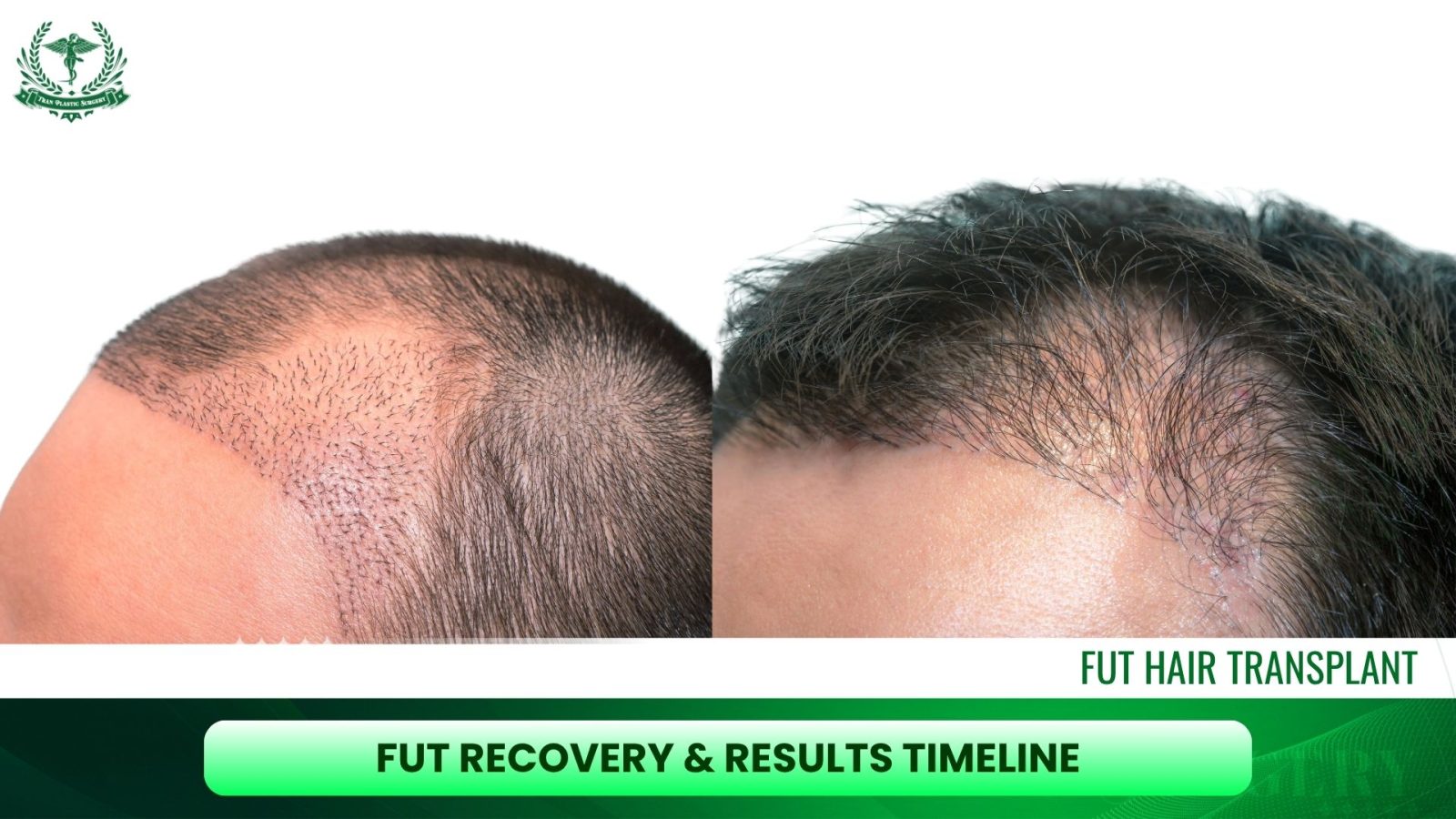
When performed by an experienced, board-certified surgeon, FUT hair transplantation side effects are minimal, and long-term complications are extremely rare. Proper care and follow-up ensure a smooth recovery and excellent results.
How Many Grafts Are Needed for a FUT Hair Transplant?
The number of grafts required for a FUT hair transplant depends on several factors, including the size of the balding area, hair texture, donor density, and the patient’s desired level of coverage. During your consultation, a surgeon evaluates these details to create a customized graft plan that achieves natural, balanced results.
In most cases, a FUT hair transplantation session can yield between 1,500 and 3,500 grafts, making it suitable for moderate to advanced hair loss. Because the strip method allows surgeons to harvest a large number of follicles efficiently, FUT is particularly effective for patients who want to restore density across wide areas of the scalp in one procedure.
| Norwood Scale (Male Pattern Baldness) | Hair Loss Area | Estimated Grafts (FUT) |
| Stage 2–3 | Receding hairline or temples | 1,000 – 1,800 grafts |
| Stage 4 | Frontal + crown thinning | 2,000 – 2,800 grafts |
| Stage 5 | Extensive front and mid-scalp loss | 2,500 – 3,200 grafts |
| Stage 6 | Severe frontal and crown baldness | 3,000 – 3,800 grafts |
| Stage 7 | Complete top baldness | 3,500 – 4,500 grafts (may require two sessions) |
Other Factors That Influence Graft Count:
- Hair Type and Thickness: Coarse, wavy, or curly hair provides more visual density with fewer grafts.
- Donor Area Quality: A dense and healthy donor zone allows for more viable follicles to be harvested safely.
- Desired Coverage: Some patients prioritize restoring the hairline first, while others target the crown or full scalp coverage.
- Previous Procedures: Patients who have undergone earlier transplants may need additional grafts for refinement or density enhancement.
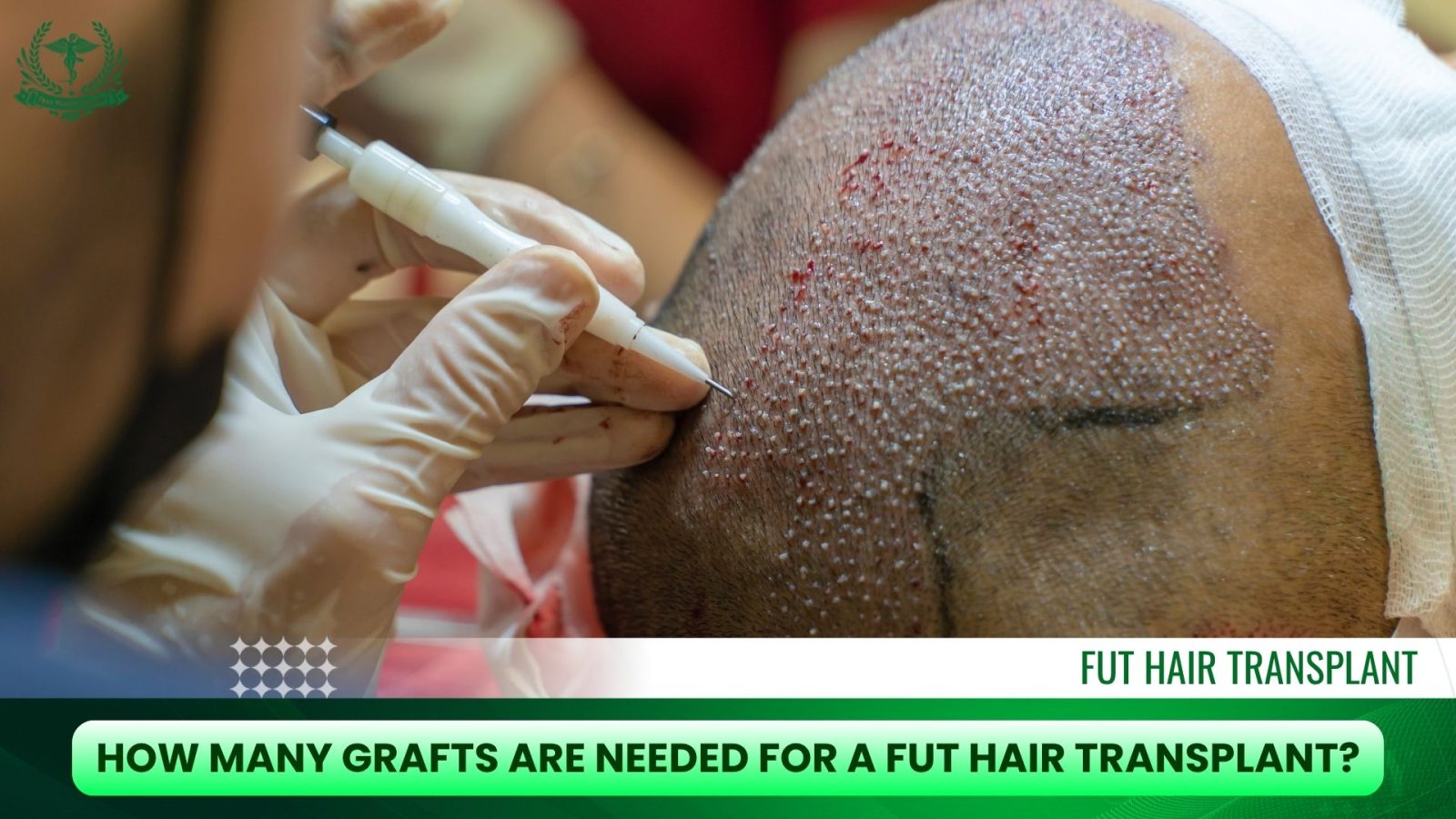
Choosing the Right FUT Surgeon
1. Check the Surgeon’s Credentials and Certifications
When researching the best FUT hair transplant surgeon, always confirm their medical qualifications and board certifications. Surgeons affiliated with respected organizations such as the International Society of Hair Restoration Surgery (ISHRS), the American Board of Hair Restoration Surgery (ABHRS), or local medical boards are more likely to follow established safety and ethical standards. Certification demonstrates that the surgeon has completed specialized training and adheres to the highest levels of care.
2. Review Before-and-After Results
Reputable FUT hair transplant clinics should provide high-quality before-and-after photos of their patients. These images reveal the surgeon’s level of artistry, showing how well they recreate natural hairlines, density, and growth direction. When evaluating these results, look for realistic improvements rather than overedited or exaggerated transformations.
3. Assess Experience With FUT Technique
FUT is a technically demanding procedure that requires precision during donor strip removal, graft dissection, and closure. Choose a surgeon who performs FUT regularly and has demonstrated mastery in minimizing scarring while maximizing graft survival. An experienced FUT doctor can also recommend whether FUT, FUE, or a combination of both is best suited for your unique case.
4. Prioritize Clinics With Transparent Consultations
The best FUT hair transplant clinics provide clear, honest information during your consultation. They should evaluate your scalp under magnification, explain the estimated number of grafts, discuss pricing in detail, and outline recovery expectations. Avoid clinics that guarantee unrealistic results or rely solely on sales consultants instead of qualified medical professionals.
5. Consider Aftercare and Long-Term Support
Postoperative care is essential to ensure proper healing and optimal results. Choose a clinic that offers comprehensive follow-up appointments, scar management options, and guidance for hair care after surgery. This ongoing relationship reflects the clinic’s commitment to patient safety and satisfaction.

When performed by a board-certified FUT surgeon, the procedure consistently delivers strong, natural results with minimal risk. Taking the time to verify credentials, evaluate real results, and understand the surgical plan can make the difference between an average experience and a life-changing transformation. A professional, transparent, and patient-centered approach is the hallmark of a truly trusted FUT hair transplant clinic near you.
FUT Hair Transplant for Women
A FUT hair transplant for women is an effective solution for restoring natural hair density and redefining the hairline without the need to shave the donor area. It’s particularly beneficial for patients with female pattern hair loss, traction alopecia, or high foreheads who want a long-term, discreet restoration method. The strip technique allows surgeons to harvest dense grafts from the back of the scalp and transplant them precisely into thinning zones, producing soft, natural coverage.
For women seeking a complete aesthetic enhancement, FUT hair transplantation can be combined with other non-surgical beauty treatments such as PRP therapy (platelet-rich plasma) to boost graft survival and stimulate native hair growth, or scalp micropigmentation to improve visual fullness. Some patients also pair the procedure with eyebrow or eyelash transplants, facial contouring, or skin rejuvenation treatments like laser resurfacing and microneedling to achieve balanced, youthful results.
Conclusion
A FUT hair transplant remains one of the most trusted and effective techniques for achieving permanent, natural hair restoration. By allowing surgeons to harvest a high number of grafts in a single session, FUT offers exceptional density, long-term growth, and outstanding aesthetic results. Whether you’re addressing advanced hair loss, restoring a receding hairline, or enhancing overall volume, this procedure provides a lasting solution that looks and feels completely natural.
Don’t forget to contact the Tran Plastic Surgery team immediately to receive consultation or make an appointment for this effective hair restoration service.
FAQs About FUT Hair Transplant
1. Does a FUT hair transplant leave a scar?
Yes, a FUT hair transplant leaves a thin, linear scar in the donor area where the strip of skin is removed. However, modern techniques such as trichophytic closure allow hair to grow through the scar, making it nearly invisible once healed. For patients who keep their hair medium to long, the scar is typically undetectable.
2. Is a FUT hair transplant painful?
The procedure itself is not painful because local anesthesia completely numbs the scalp. Some tightness or mild soreness may occur in the donor area for a few days after surgery, but this is easily managed with prescribed pain relief. Most patients describe recovery as comfortable and predictable.
3. How long does it take to see results after a FUT hair transplant?
New hair growth generally begins around three to four months after surgery. The hair continues to thicken and mature over the next several months, with final results visible between 12 and 15 months post-procedure. Because the transplanted follicles are permanent, the new hair grows naturally for life.
4. Which is better, FUE or FUT hair transplant?
FUT is better for patients needing more grafts and higher density, while FUE is ideal for those wanting minimal scarring or shorter hairstyles. The best option depends on your goals and donor area condition.
5. Which is less painful, FUE or FUT hair transplant?
Both are nearly painless under local anesthesia, but FUE usually causes less postoperative tightness or soreness than FUT because it doesn’t require stitches.
6. What is the success rate of FUT hair transplant?
The FUT hair transplant has a success rate of about 95–98%, with strong graft survival and natural, permanent results when performed by an experienced surgeon.

